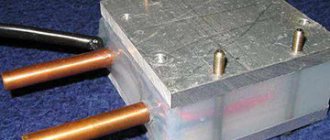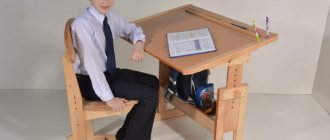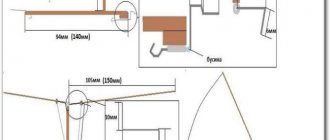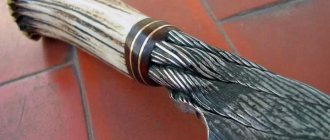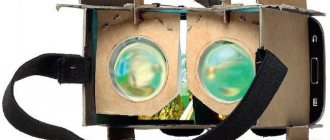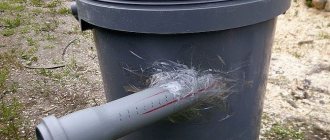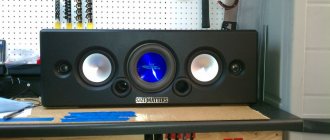Modern juicers cost a lot of money, and besides, they don’t work that well. Therefore, I decided to make a juicer with my own hands, better, simpler and, most importantly, cheaper.
For a homemade juice press you will need:
- 40mm plywood. You can glue several sheets of plywood with special wood glue.
- Good paint for interior surfaces
- Bottle jack, lifting capacity 4 tons
- 10mm threaded stud
- Flange or steel plate for press
- Thermoplastic
- Stainless steel sheet
- Primer spray
- Wood glue.
Required tools:
- Saw. Any will do. Jigsaw, table saw, band saw or regular hand saw.
- Cordless drill.
- Clamps
Additional tools for screw squeezer:
- Countersink
- Grinder
- Threading tools
Simple tips for your safety:
- Keep your hands away from anything that moves
- Wear safety shoes
- Wear safety glasses
How to choose a press
When purchasing an apple press, you should pay attention to the following design parameters:
- Capacity volume for loading . The amount of raw materials that can be processed at one time depends on the volume.
- Basket material . The best option is stainless steel. It lasts longer and is easier to maintain.
- Design features . You need to know whether you need an electrical or water connection.
- Dimensions . The storage conditions of the unit and the ease of its use depend on the size.
- The need to apply physical force to work with the press . Some models will be difficult for girls to handle.
- Design performance (how much juice is produced per unit of time). For large volumes of fruit, the optimal indicators are 200 or more liters per hour.
- Price . This parameter is considered relative, but it cannot be ignored. The most affordable ones are mechanical. The price depends on the size of the basket. The most cost effective are hydraulic structures (they are inexpensive and do not require physical effort).
Washing machine drum press
From a washing machine you can make not only a juicer, but also a press, using separate parts from it. The design is quite simple since there is no electric motor, no electricity required, and no complex structural components. For the washing machine, we only need a centrifuge made of stainless steel. Since the part has holes, this allows it to be used for the purposes in question. The manufacturing process consists of the following steps:
Variety of models
Different models used for squeezing juice are sold in stores. But they cannot cope with a large harvest. Often, summer residents make a juice press at their dacha with their own hands.
All presses used for squeezing juices are divided into four different types:
- mechanical, squeezing out juice under the influence of pressure, which is lowered manually;
- hydraulic type, but with manual drive;
- hydraulic models with electric drive;
- models with a pneumatic device, manual or electric drive.
Hydraulic
Mechanical
Pneumatic
How to care for your home crusher
Caring for equipment is a prerequisite for its operation. Only with high-quality and careful care will household appliances serve with maximum functionality for a long time.
Juicers are no exception, because the remaining pulp of fruits and vegetables will become a huge breeding ground for bacteria and mold. In addition, the cake forms a coating on the body, contributing to the destruction of parts.
When caring for your home crusher, you should adhere to the following principles:
- Disassembling the device after use.
- Thorough rinsing and cleaning.
- Drying parts.
- Storage unassembled in a specially designated place.
What materials will be needed
You will need a tool that is used to process metal and wood, as well as a regular plumbing kit. It all depends on the design of the device and the available workpieces and materials.
Based on the degree of automation, a distinction is made between electrically conductive and manual models.
What you need to prepare:
- saws for processing wood and metal (a grinder with interchangeable wheels is suitable);
- hammer;
- keys according to the diameter of the bolts used;
- pliers;
- wire cutters;
- drill with a set of drills for metal and wood;
- jack;
- welding machine (to work with frame elements).
The following materials will also be required:
- container in the form of a tank (maybe a part from an old washing machine, but only whole, without damage to the inside, chips or rust/mold);
- parquet wooden slats with a total length of approximately 15 m, hand-made boards and bars;
- metal pipes with walls from 3 mm thick;
- metal channel;
- a bench screw with a matching nut;
- threaded rod and valve;
- a metal corner or other material for constructing a frame;
- wood glue;
- bolts with nuts, self-tapping screws;
- metal plate for fastening the slats with bolts;
- metal sheet for organizing the pallet;
- burlap or other natural fabric measuring 1.5 x 1.5 m for filtering pulp in the tank.
IMPORTANT: The vitamins contained in fresh fruits are very easily destroyed by prolonged contact with metal. Therefore, it is best to make apple presses with wooden bodies.
To preserve the taste of the juice, it is not advisable to use bars, slats and boards made of pine or spruce. Essential oils and resins in the composition, as a result of contact with juice, significantly distort it.
Also, pressed boards such as chipboard or OSB are not suitable, since their structure is impregnated with phenol-formaldehyde adhesive, which, along with dust and other particles, can enter the product during squeezing.
The sequence of work for the manufacture of a simple pressing device
The elementary design of a mechanical press, which any summer resident can make, is made in the following sequence:
- A vessel of the required volume for the crushed mass is prepared. You can take an old drum from a broken washing machine. Holes are drilled on the walls of this drum with a drill, trying to arrange them in several lines, like pieces on a chessboard.
- There is a dish, somewhat larger than the previous one, but without a bottom. Additional holes are made in it on the wall below.
- The prepared dishes are inserted one into the other, and a wooden block of such thickness is placed between the walls to create the necessary gap between the walls of the vessels.
- A frame with a shape similar to a P is made from durable wood. A thick cast iron or steel circle is installed on the crossbar of this frame. It is fixed using an additional hole made inside the frame body.
- Both vessels are placed inside the large pelvis. They can take any basin, as long as it has a diameter larger than the main body and is made of polymer materials into which food products can be poured or placed. A hole is made in the bottom of the basin for a tube designed to drain the squeezed juice, and the tube itself is secured.
- The frame must be concreted, because it is the basis of the pressing mechanism. A structure assembled from a basin with a tube and vessels is then mounted on the frame body.
- Prepare a container to collect the liquid during spinning. The end of the tube, which was fixed in the bottom of the pelvis, is lowered into it.
Your homemade homemade press, the purpose of which is to squeeze out juice, is ready.
Stainless steel sheet blank with drilled holes
Bending the workpiece into a cylinder
The lower part of the frame is made of profile pipe
Upper part of the frame with a nut for the screw The press is almost ready, all that remains is to paint the frame
Advantages and disadvantages of a homemade press
Let's start with the good: you will make a press with your own hands, choose the size and design that is convenient for you personally. And if you have all the necessary tools at home, wood and stainless steel, such a press will come out cheaper than a store-bought one. You can show off your talent to your friends and family.
But let's look from the other side: for the first time you decided to make something with your own hands and chose a press. There are no tools, materials and a jack need to be purchased, but for food products wood and metal are more expensive. Without experience, it will be difficult to obtain smooth parts and welding.
Due to improper design, the spin will be weak, you will waste your energy, time and money.
For beginners, I advise you to start with something simpler, and if you really need it, buy a press in a store. Just choose stainless steel models. For example, this one even comes with a jack.
From an activator type machine
A centrifugal juicer can also be made from an activator-type washing machine. The activator and shaft are removed from the bottom of the tank, and a shaft of the required diameter is installed. Three knives are installed on the shaft thread with nuts at an angle of 60 degrees. The drain hole closes. A stainless steel mesh with a mesh size of approximately 1.5 mm is placed on the wall of the centrifuge with an overlap of 40-50 mm. A complete rubber cap, plugged with a stopper, is placed on the bottom. Everything is washed with baking soda. The timer relay is turned off or its toggle switch is jammed.
Several apples are dropped into the tank onto moving knives. The fruits are crushed for 20-30 minutes. At a time, transfer no more than 3 liters of the resulting puree into the centrifuge so that it does not spill out. After 2-3 minutes, the mesh containing the waste is removed.
The assembled apparatus prepares 10-12 liters of juice with pulp per hour and works with juicy fruits. To remove sediment, the juice is allowed to settle and then passed through cheesecloth.
Recommendations for assembling presses
To make a juice press you need to consider the following points:
- Juice container. You can use a tank or a large pan, and install a tap at the bottom to drain,
- If a wooden barrel is used, it should be made of parquet slats,
- If the washing machine body is used, it must be clean and sealed, free of rust and mold,
- Apparatus body. The simplest option is a pyramid of wooden latticework.
To ensure uniform extraction of juice, finely chopped fruits are placed in clean bags or transferred with a soft cloth. If this is not done, a DIY juice press will leave wet pulp and a large amount of waste. You can cut apples using an ordinary knife or a special chopper. The device can be purchased, but more often it is made independently and built into the pressing apparatus.
Necessary tools and materials to make a juice press
To work you will need the following tools:
- circular saw for metal;
- a regular saw (if the grate is made of wood);
- planks, wooden planks, stainless steel sheets;
- corners;
- hammer;
- bolts;
- nuts;
- spanners;
- welding machine;
- pliers;
- wire cutters;
- polypropylene sugar bag.
You will need the following materials for the press:
- metal beams for the frame;
- wooden blocks or strong steel tubes;
- screws, bolts, nuts;
- metal tank, preferably stainless steel, but iron can also be used;
- faucet with opening handle;
- jack or threaded screw.
Press using a jack
Unlike manual devices, mechanisms using a jack are distinguished by greater productivity and the forces that the tool is capable of exerting.
Therefore, you need to take care of the strength of the pulp container so that it does not break as a result of work. It is best to use solid metal tanks with holes and without a bottom or attach wooden slats with thick plates (from 2-3 mm).
The most convenient are car jacks designed for a weight of 2-3 tons.
Depending on the owner’s preference, the tool can be installed on top or bottom of the equipment, which will not in any way affect the performance or other characteristics of the device.
Step-by-step instruction
- Make a container for the pulp. You need to wash the washing machine tank, thoroughly clean it of any deposits or rust, remove the bottom and carefully make many holes to a height of approximately 0.2-0.3 of the length of the wall. This will increase the efficiency of the unit due to the ability of the juice to escape not only through the lower part of the tank, but also along the height of the pulp column. In the same way as for a screw press, you can make a wooden tank, but attach it to thicker metal plates.
- It is necessary to weld a frame: a steel sheet at the bottom of the device, 4 metal tubes or corners, two profiles at the top of the product. In this case, the height is calculated so that a tank freely placed in this “cage” will allow you to fill in raw materials, install a circle and a jack.
- The assembled device should accommodate approximately 7-15 kg of apple raw materials (depending on the size of the device). For filtration, a cloth made of flax, burlap or other natural material is used, which will be placed in a container and completely protect the pulp from contact with the tank.
- A wooden circle is placed on top of the chopped fruit, as well as below. This prevents the structure from collapsing under the high pressures created by the jack.
In 5 minutes of operation of such equipment, on average, with a sufficient amount of pulp, 1.75 liters of pure homemade juice are filtered.
Worm gear or hydraulic jack: what to choose?
The screw (worm) mechanism in the press is implemented in the form of a large screw (threaded axis) with a nut or a mechanical jack. The latter option is much simpler - you can buy it at a spare parts store or take it out of the trunk of a car; you don’t need to look for, adjust, grind or weld anything.
Designs based on a hydraulic jack are much more productive (force from 1t) than mechanical ones, and require a minimum of human labor. Hydraulic bottle jacks make it possible to squeeze juice quickly and in large volumes. They fit comfortably into any design.
Bottle Hydraulic Jack


